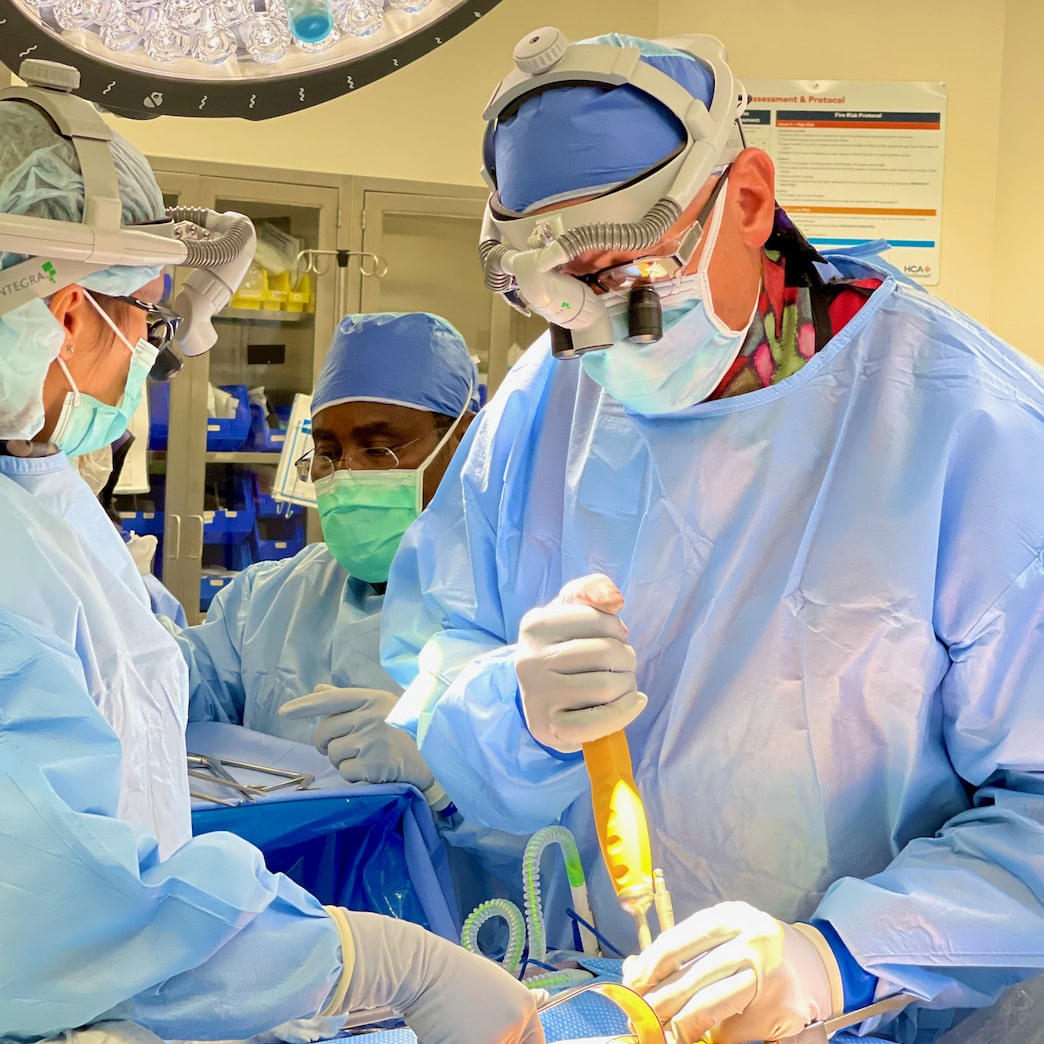
New Surgical Implant for Patients to Preserve Motion in Low Back Surgery: Lumbar Artificial Disc Replacement
Lumbar disc replacement is a new surgical option to preserve mobility in the lower back.
It might be a slight overstatement to say that ‘everyone’ suffers from back pain at some point in their lives, but it sure seems that way, right? Well, the stats show that 80% of Americans will have at least one episode of back pain in their lives. Thankfully, the majority of acute back pain episodes will resolve within 6 weeks, but unfortunately, 20% of people with back pain will experience symptoms longer than 12 weeks, which is considered chronic back pain.
For those of you with chronic low back pain, or who know of a friend or family member with chronic low back pain, that 12 weeks quickly turns into 12 months–and the next thing you know you’ve been dealing with back pain for years. During that time you feel like you’ve exhausted all treatment options, such as the many anti-inflammatory medications (like over-the-counter Aleve, or prescription Celebrex), physical therapy, a home exercise program, weight loss, and making dietary changes to improve nutrition or taking supplements. If the ‘simpler’ treatments failed you, you may have even tried a variety of spinal injections, traction, chiropractic manipulation, or purchased an inversion table.
Are you frustrated with the time, money, and energy spent on trying to resolve your back pain without success?
Spine surgery may be one of the fastest advancing surgical subspecialties over the past decade, which is expected to continue. One of these advancements is disc replacement, which is thought of as an alternative to fusion. Although the concept of a disc replacement procedure has been around for decades, it is not until recently that the technology has caught up to the concept.
Learn the ‘back story.’ What is the difference between a spinal fusion and disc replacement?
If a disc is creating unrelenting back pain, then removing the disc seems like a good option when all else fails, right? Well, it’s not quite that simple. If a disc is removed in its entirety, then there must be something put back in its place.
The traditional method of fusion involves removing the bad disc, replacing it with a structural element to restore the height of the disc (a cage), and filling the cage and/or surrounding bony areas with bone graft. The act of fusion is the incorporation of that bone graft into the native bones surrounding the removed disc. This process takes time to heal and there are activity restrictions for an average of 3 months during that crucial healing period. Alternatively, a disc replacement is a newer option in spine surgery that involves less healing time and preservation of motion.
In a lumbar disc replacement surgery, the entire disc is removed. It is replaced with an implant that allows for motion, which is similar to the concept of a knee or hip replacement. Without the need to wait for fusion incorporation, downtime is reduced after a disc replacement surgery. Unlike fusion, maintaining motion is not expected to transfer the stress of extra motion to the disc above and below the surgical level.
If a disc replacement is meant to restore motion, is taking away motion with a spinal fusion a bad thing?
For many people, the answer is no. Their segments are so worn out that removing motion is exactly what they need. But a disc replacement is an attractive alternative for many people suffering from low back pain where motion preservation is desirable.
As technology has improved, so have the implants. Although disc replacements are not going to replace the need for fusions altogether, it is nice to have this option in the arsenal of available treatments. Patient selection will be key to successful outcomes, as not everyone will be a candidate for this procedure. Please have an open conversation with your spine surgeon about what options are right for you and be sure to ask why. Consider how many levels are problematic for you, what type of motion you have now, and what your activity goals are for the future. Open communication is imperative to helping you make an informed decision on the best next steps.
Topics covered
About the Author
Featured Resources
Insights to Achieve a Pain-Free Life



